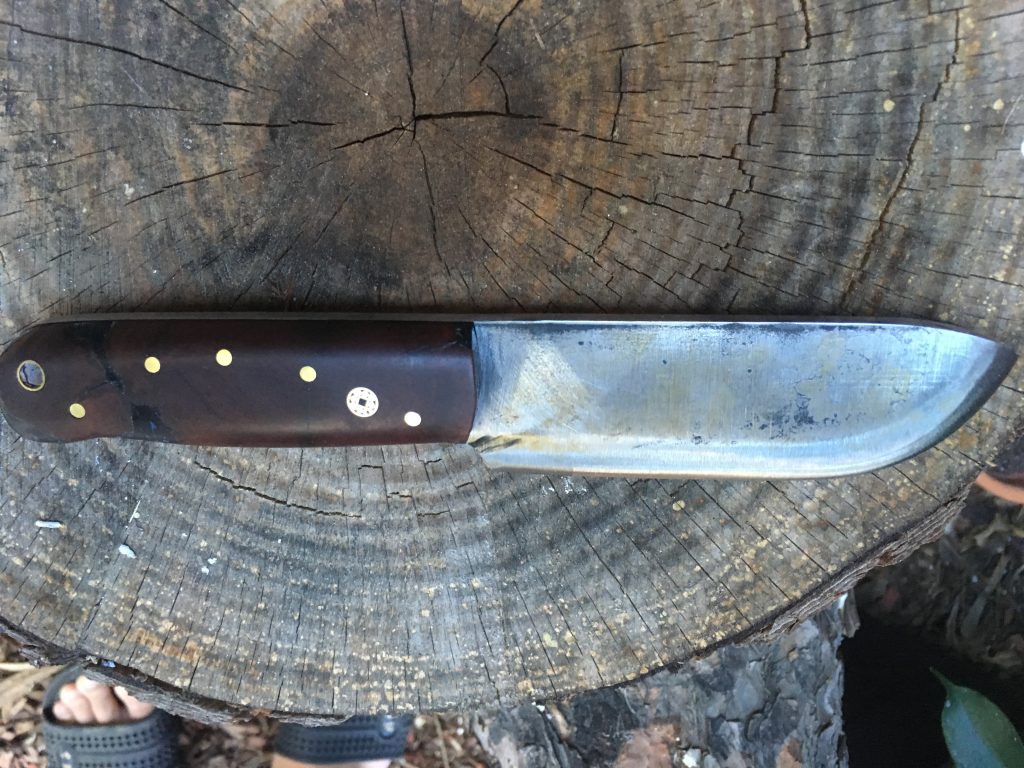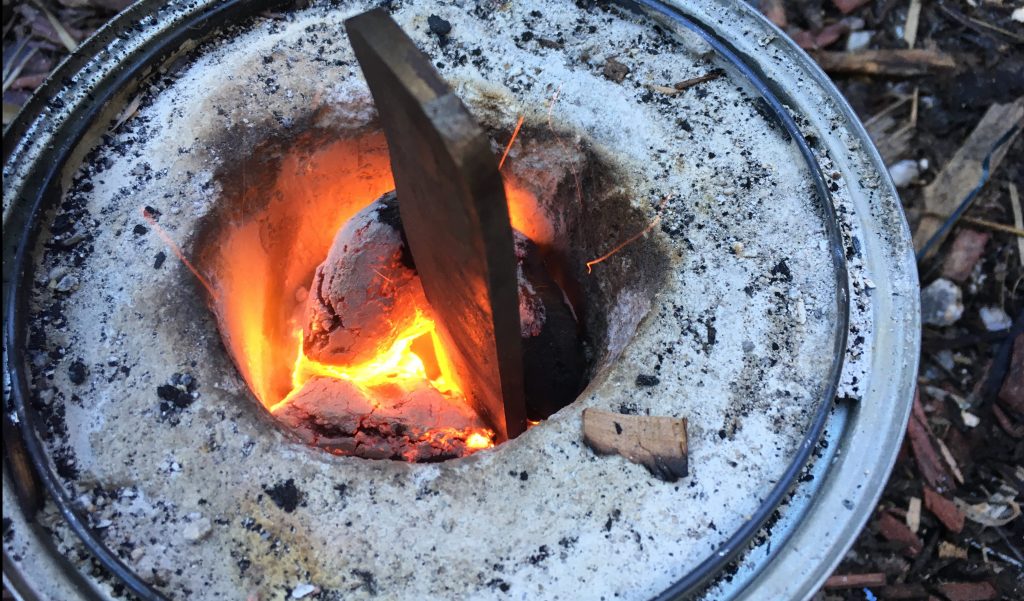
Heat Treating High Carbon Steel at Home
Last updated on May 5th, 2019 at 11:24 pm
After shaping a few handles, I wanted to try my hand at heat treating high carbon steel. I bought some 1084 bar stock after reading up on steels that are forgiving during heat treatment. From what I gathered, 1075, 1084, and 1095 were marked as the “beginner” steels, with 1095 being the least forgiving during the quenching process. After going through this process, I wouldn’t hesitate to have started with 1095.
Previously, I made a paint can forge with intent to be used as a cheap backyard propane forge. I think this can still be done, but I found charcoal and a hairdryer to be a more masculine and quick option.
Materials Used:
- Paint Can Forge
- High carbon steel in bar stock
- Angle Grinder
- Vegetable Oil to Quench
- Magnet to check for temperature
- All-Metal locking pliers
Propane Option:
Charcoal Option:
Shaping the Knife
I bought 1084 annealed bar stock due to its forgiving nature. By this, I mean that the heat treatment process is more forgiving to error. After reading about the short time to get 1095 from critical temperature to quenched, I decided to go with 1084.
I wanted to create a knife that is interesting to look at and it’s main purpose would be for batoning campfire wood. I won’t get in to too much detail here, but I basically used an angle grinder to cut both the shape and the bevels of the knife. As a result, the knife looks rough, stout, and has a convex edge.
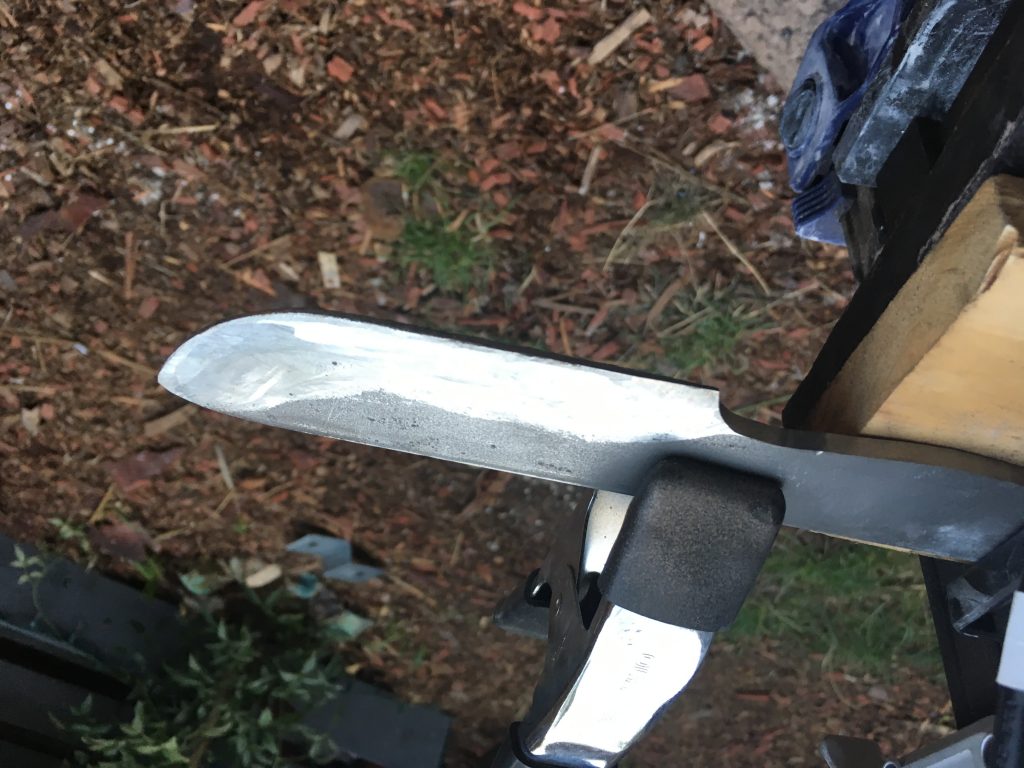
Propane Heat Treating High Carbon Steel
My first attempt at heat treating using a propane torch didn’t go so well. With my paint can forge, I could not get the entire knife heated to critical temperature. I could get areas of the knife to non magnetic, but the entire length of knife would not heat correctly. Obviously, use the aforementioned locking pliers to hold the knife. Use gloves too.
I’m confident this would work on a smaller blade, but for a knife of this size, this wasn’t going to work.

Heat Treating High Carbon Steel with Charcoal
The multiple failed attempts at propane heat treated had me frustrated. I had even bought more tanks and an additional burner to try to heat the knife in open air. After giving up the propane route, I decided to take the charcoal route. I’m convinced that this is the way to go. However, it’s dirty, smokey, and less controlled.
While not recommended, I used briquettes for heat treating this high carbon steel. The reason it isn’t recommended is that charcoal briquettes have additional chemicals that could contaminate the steel during heat treatment. However, I had a bag on hand and it was a rainy day project.
Lump charcoal is the recommended route to take, but this worked.
Start by readying the forced induction system. That’s a fancy way for describing a hair dryer duct taped to a 3/4 in pipe used previously in my paint can forge build. Then, plug in the hair dryer close enough to the forge.
Fill the paint can forge with charcoal and start it with lighter fluid. Lock the knife into the locking pliers to ready it for insertion.
As it burns down, insert the knife into the charcoal, covering the blade. Add more charcoal as it burns down. Next, insert piping that has been duct taped to the hair dryer to force air into the charcoal at an angle.
Charcoal with forced air will quickly bring the steel to non magnetic, so be sure to check often. Once my knife was red hot and non magnetic, I put the blade back in for another minute or so.
Quickly, move the knife from the forge into the quenching oil and slice the oil back and forth. If everything went well, we should have a fully hardened blade, ready for tempering.
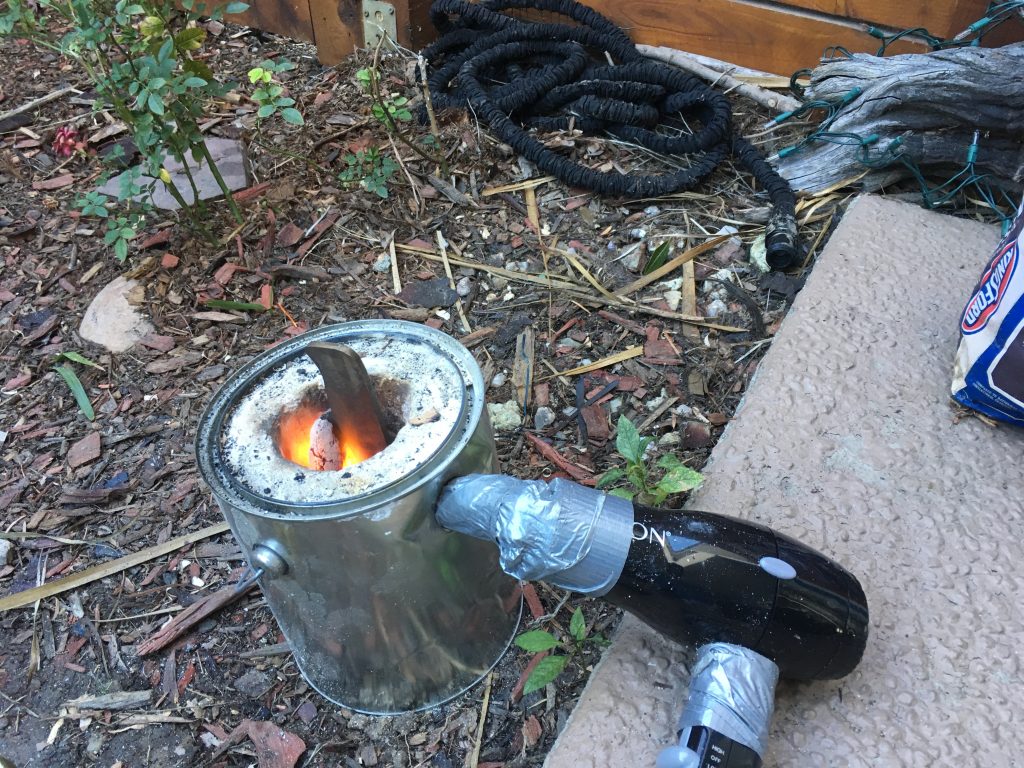
Tempering 1084 High Carbon Steel
Tempering the steel is as easy as using a toaster oven and time. Because we used vegetable oil in this quenching process, the smell wasn’t offending when tempering inside. Set the blade in the toaster oven at 400-degrees-F for about an hour and it should result in 60-61 HRC.
Fin!
-
 Bushcraft Hat$35.00
Bushcraft Hat$35.00 -


 Stay Sharp Wolf T-Shirt$35.00
Stay Sharp Wolf T-Shirt$35.00 -


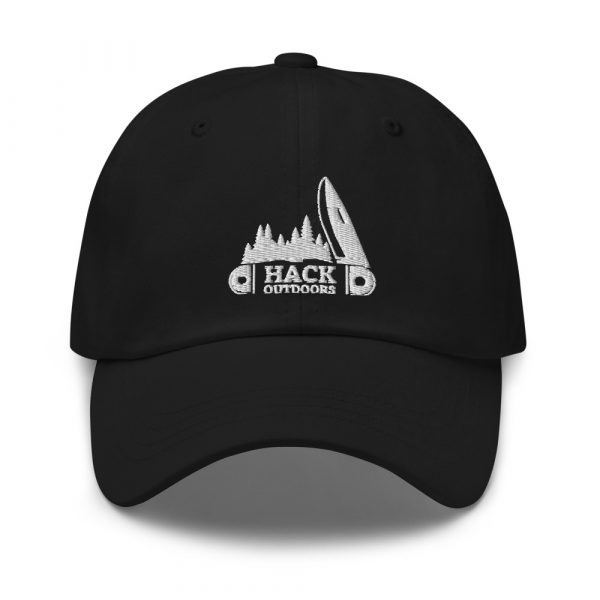 Hack Outdoors Pocket Knife Dad Hat$35.00
Hack Outdoors Pocket Knife Dad Hat$35.00 -


 American Knife Maker Sweatshirt$45.00
American Knife Maker Sweatshirt$45.00 -


 American Knife Maker T-Shirt$35.00
American Knife Maker T-Shirt$35.00
